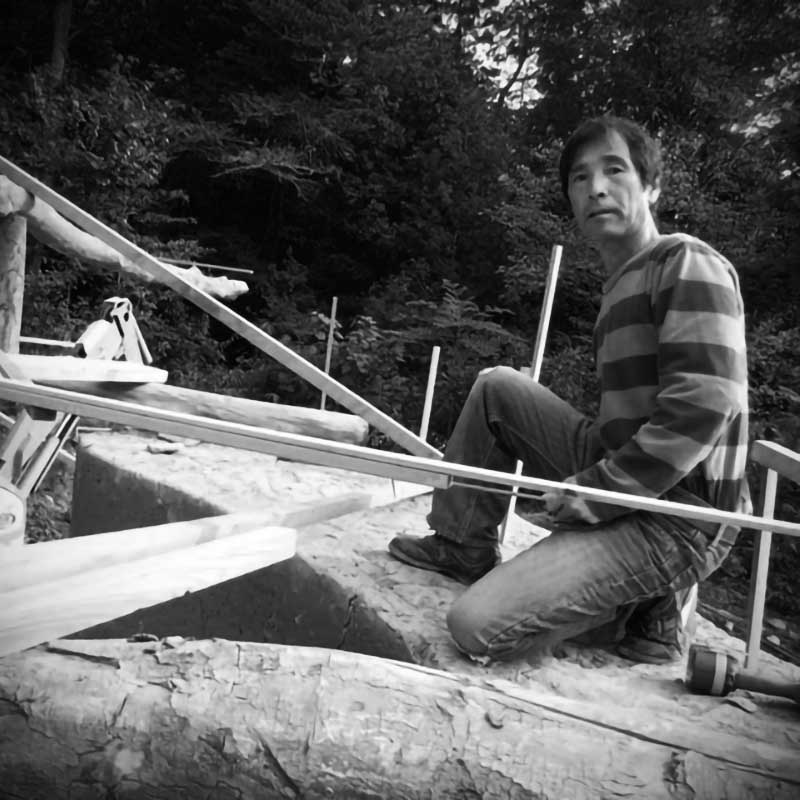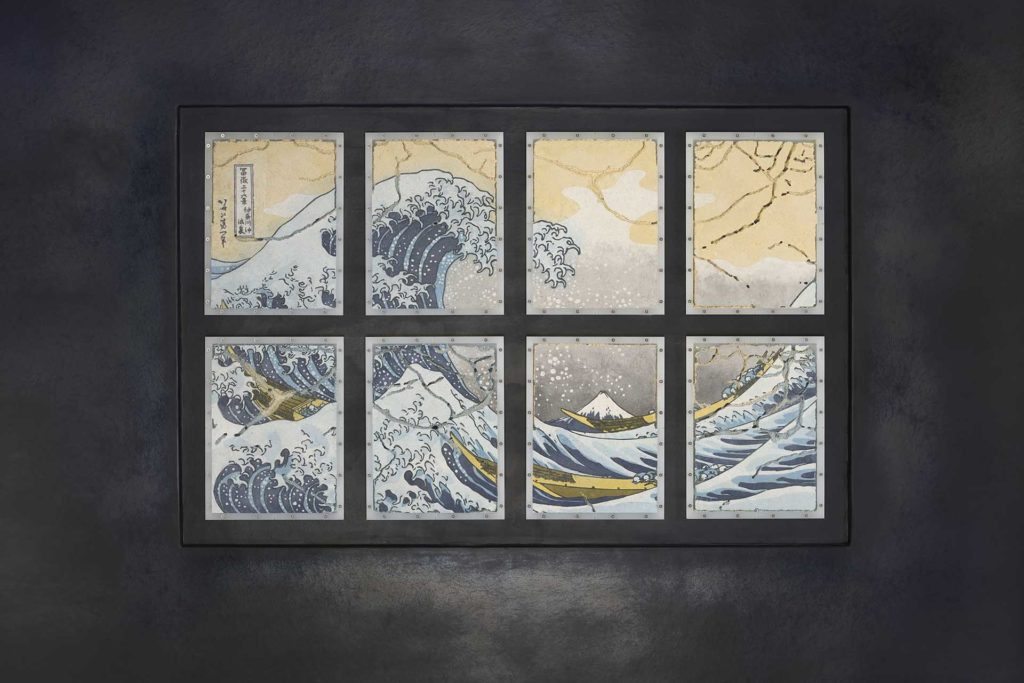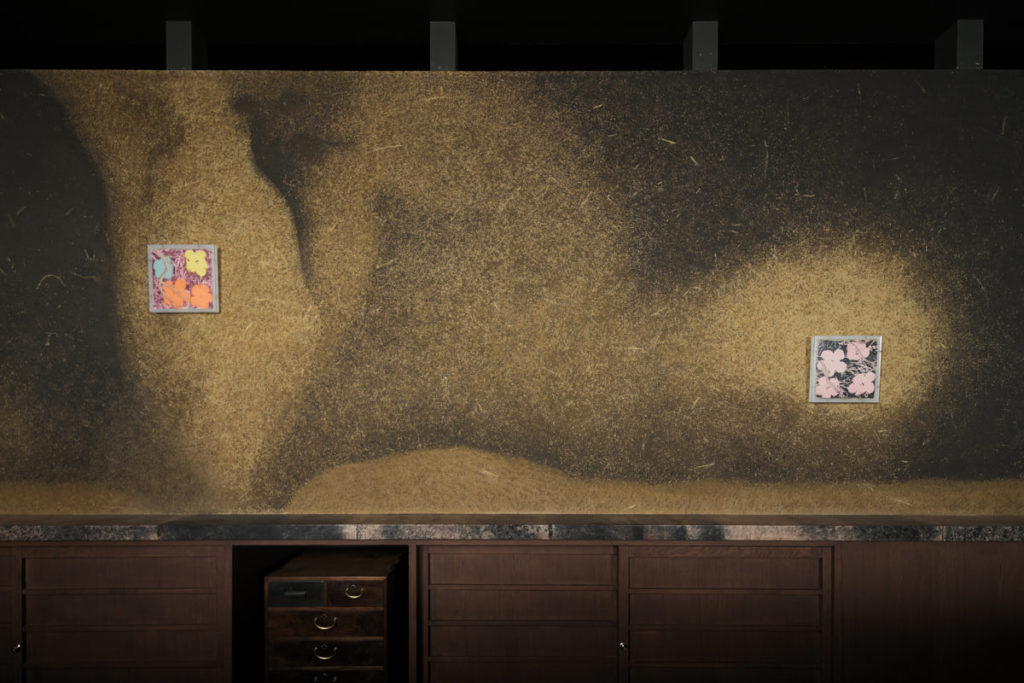Plasterer Akira KUSUMI
左官職人 久住 章
日本の左官職人。「カリスマ左官」と呼ばれている。兵庫県淡路市志筑出身。18歳で長兄について左官の修業を始める。京都の数寄屋左官に弟子入りして聚楽壁を習う。業界誌『左官教室』の編集者小林澄夫の紹介で、建築家の仕事を手がけるようになる。アーヘン工科大学の夏期講師に招碑されたのを機に、世界各地の土壁を見てまわり、独自の技をつくりあげる。象設計集団との仕事が多く、ドーモ・キヴァ (徳田邸)、特別養護老人ホーム葛飾の家、高橋建設社屋、十勝ビール、ドーモ・キニャーナなどがある。
1984年兵庫県技能顕功賞、1995年吉岡賞(現新建築賞)、1999年、日本建築学会文化賞受賞。
A plasterer from Awaji-shima, Hyogo prefecture. Kusumi began his training along with his older brother at the age of 18. He first learned to work with earthen wall specific to Kyoto known as Juraku-style under a master plasterer who specialized in Sukiya architecture, a traditional building style. Later, while teaching at RWTH Aachen University in Germany, he had opportunities to visit and study many types of earthen wall all over the world, helping him to develop unique techniques. Kusumi has also worked closely with the architect group known as Atelier Zo, on such projects as Takahashi Construction Company Office and Tokachi Beer office. He has been awarded many honors for his craft, including the Hyogo Gino Kenko Award in 1984, the Yoshioka Award in 1995,and The Appreciation Prize of Architectural Institute of Japan in 1999.

「神奈川沖浪裏」蒼がにじむ漆喰の黒壁
Blue-tinted Black plaster wall for The Great Wave
柳さんがデザインする黒の世界に波長を合わせて、「神奈川沖浪裏」の背景は黒漆喰で仕上げて欲しいと要望があった。この黒の漆喰の特長は、三重県伊賀地方で生まれた伊賀鉄壁といい、壁の表面に小さい砂つぶや砂利(1.5mm~9mm)が浮き上がり、鈍い艶のある南部鉄器のようで、コバルトを含んだ油煙(墨)がゆっくり乾燥することによって鈍い青色が浮き上がる。もし室内でエアコンを使用しなければ、2~3年と空気中の湿気を吸いながらこの青は鈍い艶を増大させ、不思議な黒壁に成長する。黒でありながら青、これこそが浪裏にふさわしい壁である。
To compliment the dark world designed by Mr. Yanagi, I was asked to create a black plaster wall as the backdrop for Study for Japanese Art – Hokusai-. This black plaster, called Igatetsu, originates from the Iga region of Mie prefecture. It contains small grains of sand that come to the surface of the wall, giving off a deep shine reminiscent of Nambu ironware. The blue tint comes from carbon and cobalt drying slowly. If no air conditioning were to be used in the room, over time moisture would age the wall, giving the black a deeper shine.

茶室「待庵」の土壁
Earthwall of Taian Tea Room
もう一方の(カウンター内壁)黒の世界は伝統的な千利休が表現した、大山崎の妙喜庵待庵の床の土壁である。これは秀吉を招くため、急いで経年変化の風情を出す為に墨で色付けを施した壁である。技法的には明らかにされていないが、私は当時を思い浮かべて想像してみた。まず土壁の表面は少し荒く塗り、表面に藁を付着させ乾燥させる。次に粘土に墨を混入して絵の具のようにして9色作る(当時は多分1色か2色の単色)。荒縄の束を大、中、小と作り、先端を柔らかく解いて墨をつけ、その先端を叩きつけるように色付けをして、経年変化のごとく表現した。この墨が乾燥するのを待ち、サンドペーパーで表面をこすり(当時は藁束か砥草のようなものかもしれない)、小さな藁スサや切り藁の表面の粘土を少しづつ削り、あたかも土壁にアク(鉄分やマンガンによる黒ずみ)が出だし、葉の部分は白く浮き出て不思議な風情が出現したように施工した。先人の美意識や工夫、表現方法には頭が下がるばかりである。
The wall behind the counter is a recreation of Taian – Sen no Rikyu’s famous tea room at Myokian Temple in Kyoto. Rikyu colored the wall with Chinese ink to make it look aged for Hideyoshi’s visit. I tried to imagine how he could have achieved the exact technique as it has never been clear. First, the surface was roughly plastered with straw and left to dry. Ink was then mixed with clay to make 9 different shades of pigment, though I believe Rikyu only used one or two. Then I created the aging effect by tapping the ink on the wall with bundled ropes. When the ink was dry, the wall was sanded to achieve the look as if lye had risen to the surface, and to make the white portions stand out. It was a very humbling experience to re-imagine the aesthetic, creativity and expression of our ancestors.

Major Projects
-
- 東京都 赤坂 とらや赤坂店 黒漆喰磨き大壁 他各所
-
- 兵庫県 神戸市 竹中大工道具館 館内各所左官工事、講師も務める
-
- 兵庫県 三田市 パティシエ・エス・コヤマ ブーランジェリー 恋する乙女のトイレット
-
- 兵庫県 淡路島 ゲストハウス 早稲田大学とのワークショップ 吉岡賞
-
- 静岡県 修善寺 柳生の庄 部屋付露天風呂湯舟 他
-
- 和歌山県 南紀白浜 ホテル川久 人工大理石の大列柱